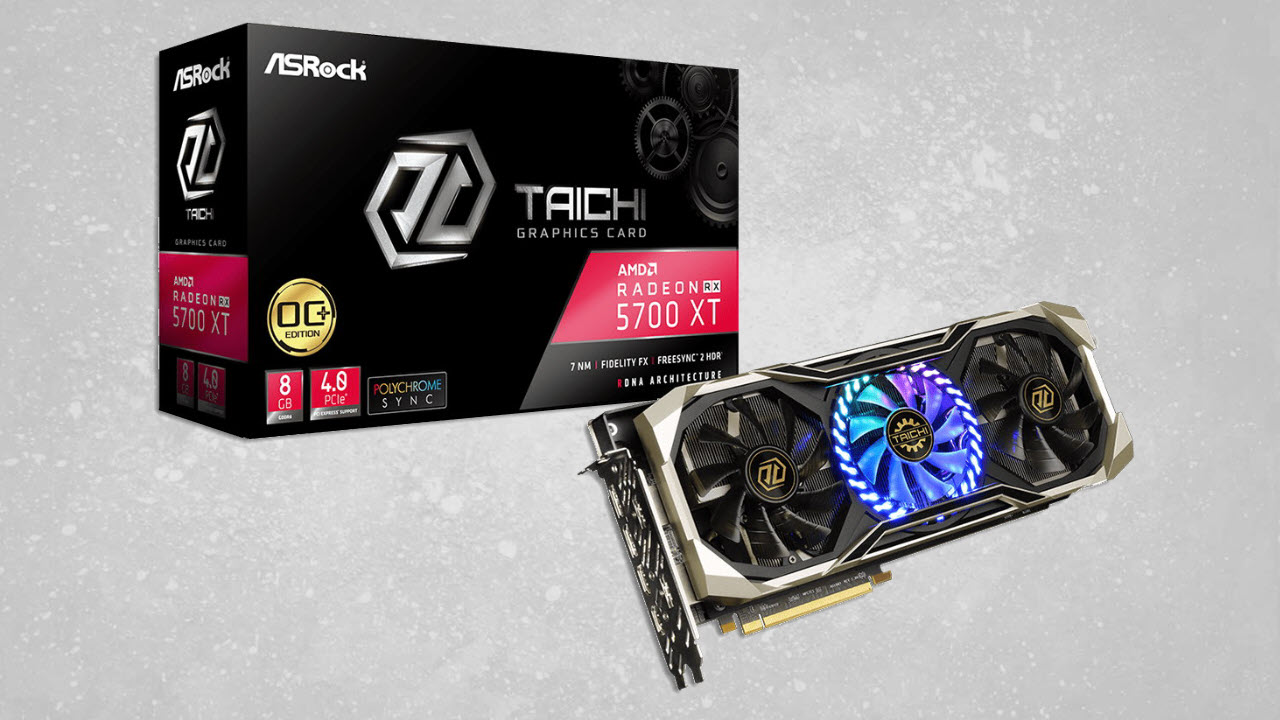Why you can trust Tom's Hardware
ASRock started with the basic reference design of the 5700 XT and upgraded the PCB and power delivery, along with using a more effective and quiet cooler than the reference models in its Taichi cooling solution. The large fans offer good airflow and do so without being the loudest item in your system. Though audible, there wasn’t any appreciable whine or hum with, the only noise coming from the wind noise generated from the fans.
ASRock took the reference clocks of 1605/1755/1905 (Base/Game/Boost, respectively) to 1810/1935/2025 MHz on the Taichi X OC+. This is a lot faster than the Gigabyte RX 5700 XT Gaming OC and faster than the Nitro+, though the latter two cards are less expensive. The clock speeds on the Taichi are the fastest we’ve seen so far.
Pricing for the ASRock Taichi 5700 XT is currently $479.99 at Newegg with the Gigabyte we compared it to priced at $399.99, and the Nitro+ $469.99. For the $10 difference between the Nitro and the ASRock,users receive a slightly faster card and a similarly effective cooling solution. That said, the difference between the two high-end cards primarily aesthetics. While the Nitro+ is a looker, the Taichi is on another level there, with its 3D backplate and its Zen styling.

Overall the ASRock Taichi OC+ 5700 XT performed well against the reference clocked card and the similarly clocked Nitro+. In GPU-heavy titles, the higher clock speeds does substantively increase performance, while in less demanding titles that gap shrinks. ASRock’s Taichi cooling solution kept the card cool under load without raising a racket. At $479, it’s one of the more-expensive Radeon RX 5700 XT cards currently on the market. So you should really only opt for this card if you’re willing to pay a premium for the card’s looks. Aside from price, our only concern with this ASRock card its size. At 12.7 inches long and 2.5 slots thick, there are plenty of cases that just won’t have the space for it.
If you’re building a new system around the card, that won’t be a big problem, as many cases can accommodate large cards. But if you’re looking for a card to drop into an existing system for a gaming upgrade, be sure to double check your chassis’ specs, and make sure that no other existing expansion cards installed in your board will bump up against this beast.
MORE: Best Graphics Cards
MORE: Desktop GPU Performance Hierarchy Table
Get Tom's Hardware's best news and in-depth reviews, straight to your inbox.
MORE: All Graphics Content

Joe Shields is a staff writer at Tom’s Hardware. He reviews motherboards and PC components.